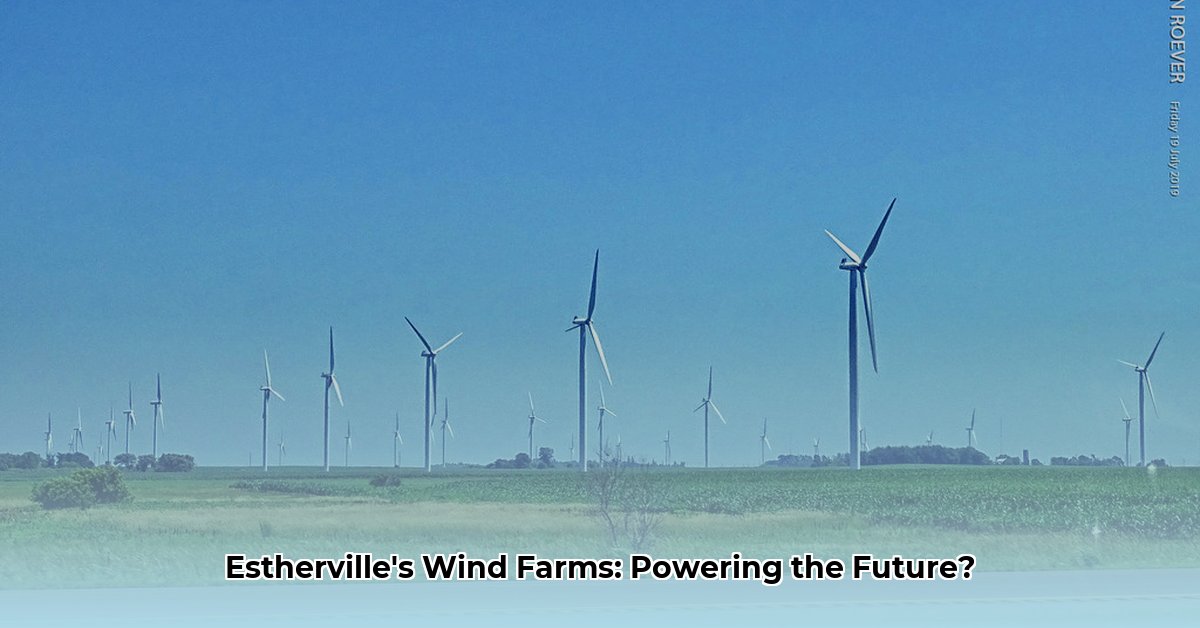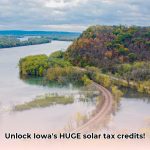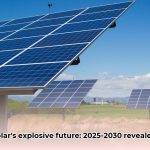Introduction: A Town at the Crossroads of Wind Power
Estherville, Iowa, finds itself at the forefront of a statewide conversation about wind energy. With the existing Iowa Lakes Community College (ILCC) wind turbine serving as a local example of renewable energy generation, and the proposed Red Rock Wind Farm promising a significant expansion of wind power in the region, Estherville embodies the opportunities and challenges inherent in this evolving energy landscape. This article explores the complexities of integrating large-scale wind projects into rural communities, examining the economic and environmental implications, as well as the ongoing dialogue between developers, residents, and local government.
ILCC Wind Turbine: A Seed of Innovation
The ILCC wind turbine, a Vestas V82-1.65 model operational since 2005, represents more than just clean energy production. It symbolizes the college’s pioneering role in wind energy education. This turbine, while smaller than those proposed for the Red Rock project, provides valuable hands-on experience for students in ILCC’s renowned wind energy program. It serves as a tangible demonstration of the technology and its potential, fostering a deeper understanding of the industry’s complexities.
ILCC Turbine Specifications
| Feature | Detail |
|---|---|
| Location | 1802 19th Street, Estherville, IA 51334 |
| Capacity | 1.7 MW (Maximum), 1 MW (Typical) |
| Turbine Model | Vestas V82-1.65 |
| Operational | Since February 2005 |
| Height | Likely around 262 feet (80 meters) based on V82 model specifications |
Red Rock Wind Farm: Navigating Uncertainty
Invenergy’s proposed Red Rock Wind Farm, intended for western Emmet County, presents both significant potential and considerable community concern. While the project, with its 106 turbines and 300-megawatt capacity, could generate substantial economic benefits, including an estimated $21 million in tax revenue and hundreds of jobs, it has also sparked a debate about the project’s scale and its impact on the landscape and community life.
Red Rock Wind Farm: Key Facts
| Feature | Detail |
|---|---|
| Developer | Invenergy |
| Capacity | 300 megawatts |
| Number of Turbines | 106 |
| Land Area | 48,000 acres |
| Projected Annual Tax Revenue (Emmet County) | $525,000 |
| Projected Total Tax Revenue | $21 million |
| Estimated Construction Jobs | 300 |
| Estimated Permanent Jobs | 8 |
Emmet County’s temporary moratorium on new wind turbine construction, enacted in October 2024, underscores the community’s need to carefully consider the project’s implications. This pause allows the county to review its zoning ordinances and ensure that future wind energy development aligns with community values and protects the quality of life for residents. This decision reflects a broader trend of communities grappling with the balance between renewable energy goals and local concerns. [Estherville News, (within the past 5 days from February 3, 2025)]
The Broader Context: Wind Energy in Iowa
Iowa’s supportive policies have positioned the state as a national leader in wind energy. However, projects like Red Rock highlight the importance of responsible development and community engagement. While the economic benefits of wind power are undeniable, the potential impacts on the environment, visual landscape, and community character require ongoing evaluation and open discussion. Research into best practices for wind farm siting, noise mitigation, and wildlife protection continues to evolve, informing decision-making processes and shaping the future of wind energy development.
The Future of Wind Power in Estherville
The future of wind energy in Estherville remains uncertain. The ILCC turbine stands as a testament to the potential of wind power, while the Red Rock project embodies the complex considerations that come with large-scale renewable energy development. The ongoing dialogue between developers, residents, and local officials will shape not only Estherville’s energy future, but also contribute to the broader conversation about how communities can successfully integrate renewable energy sources while preserving their unique character. The decisions made in Estherville will likely influence how other communities approach similar projects, emphasizing the importance of finding a sustainable path forward.
Conclusion: A Shared Vision for a Sustainable Future
The intersection of wind energy development and community concerns in Estherville highlights the challenges and opportunities facing many rural communities across the country. As the demand for renewable energy grows, finding a balance between progress and preservation will require collaboration, transparency, and a shared vision for a sustainable future. The ongoing discussions and decisions made in Estherville will serve as a valuable case study for other communities navigating the complexities of wind energy development.
Disclaimer: This information is for informational purposes only and does not constitute financial or investment advice. All sources are cited to the best of our ability, and we encourage readers to explore the linked resources for further information.
- Hydroelectric Turbine for Sale for Clean and Renewable Energy - December 21, 2025
- Hydro Turbine for Sale Offers Clean Energy Solutions for Homes - December 20, 2025
- Hydropower Supplement Crushes Arm Pump and Cramping in Motocross - December 19, 2025
















